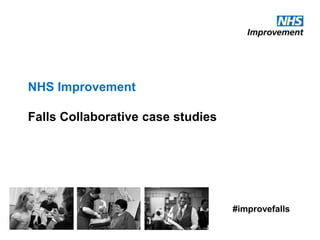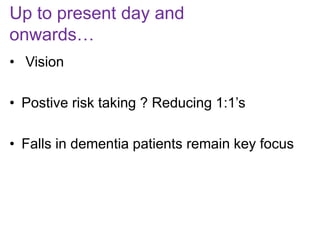Falls in hospitals are a significant safety issue, especially for older patients, accounting for a large number of injuries and deaths and costing the NHS approximately £2 billion. An initiative was launched to improve falls prevention strategies through collaborative approaches among trusts, focusing on better reporting and multi-professional involvement to create sustainable practices. Effective interventions have shown potential to reduce falls by 25-30%, emphasizing the need for quality improvement in patient safety initiatives.


































































































